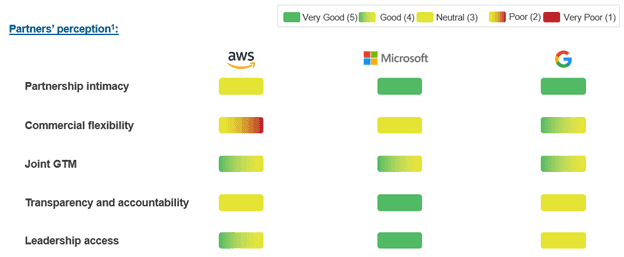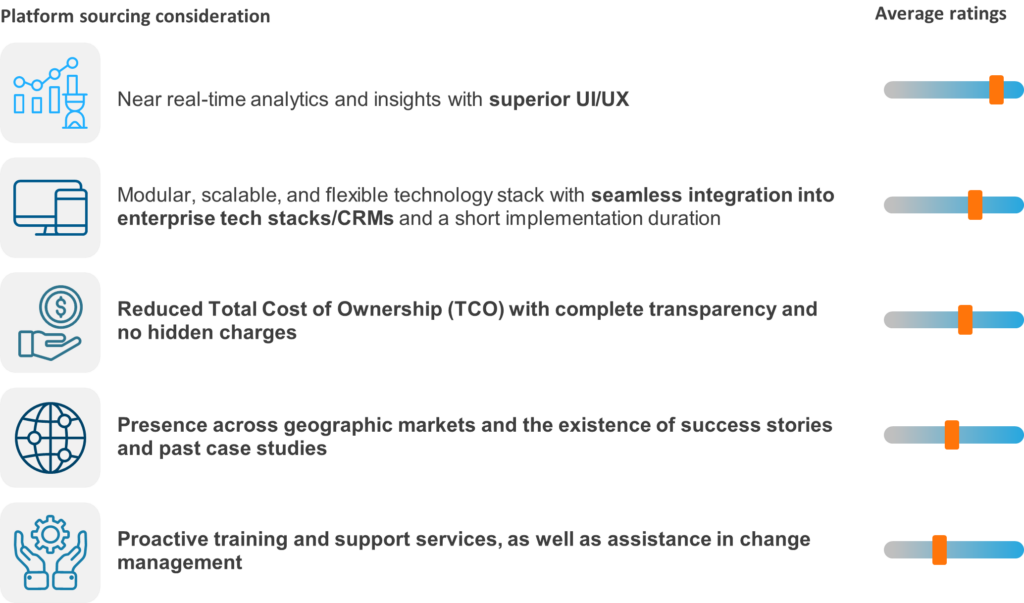Blog
Navigating the Shift to Next-Gen Customer Engagement Technology Products in the Life Sciences Sector

Life sciences enterprises are undergoing a generational shift, transitioning from outdated legacy customer relationship management (CRM) systems to modern Customer Experience Platforms (CXP). Discover the three emerging customer engagement layers in these platforms, the readiness of enterprises to adopt the latest solutions, and the factors to consider when selecting customer engagement technology in this blog. Reach out to us to discuss this topic further.
In the rapidly evolving life sciences landscape, a significant and crucial transformation is underway as companies move from traditional CRM systems to cutting-edge CXP. Let’s explore this further.
As illustrated below, the life sciences CXP technology architecture has two distinctive foundational structures: CRM and next-gen customer engagement management.

In the widespread realm of next-gen customer engagement management, the following three main customer engagement layers are emerging:
- End-to-end content management: These tools provide features to enable intelligent content management across the entire content lifecycle, including automated and modular content creation, cognitive-capabilities-powered digital asset management (DAM), content distribution recommendations, real-time content analytics, dynamic libraries, and third-party integrations
- Engagement channel optimization: Tools that manage all channel types (digital and non-digital) with CX-focused capabilities, including dynamic recommendations based on customer behavior analysis (personas), ideal content-channel combinations, third-party messenger integrations (including regional requirements), and channel analytics
- Commercial learning and training: Embedded platform features to enable complete learning experience management (preferably covering the entire commercial function), including smart assistant-led training navigation, multi-format training modules, and personalized learning journeys
Enterprise adoption priority
The pandemic has reshaped customer engagement channels, resulting in a diverse blend of traditional communication methods (face-to-face, phone, text, conferences) and digital channels (video calls, webinars, Healthcare Professional Portals).

This shift has made it essential for enterprises to adopt an efficient channel management system. As a result, engagement channel optimization has become the most demanded module in next-gen customer engagement management, followed closely by content management and learning and training.
While the life sciences commercial segment is synonymous with sales and marketing, it also includes other vital functions such as medical affairs, market access, and patient services. However, not all functions within the commercial segment are equally equipped to adopt these tools.
The overall maturity of the necessary technology, data architecture availability, and optimal processes vary significantly by function. These factors will influence platform and tool selection decisions as illustrated below:

Customer engagement technology platform sourcing factors
Enterprises looking to make sourcing decisions for next-gen customer engagement platforms and tools have moved beyond considering pricing as the sole or major driving factor. They are looking at platforms and tools that offer a better user experience and a flexible technology stack that seamlessly integrates into existing systems.

“We prioritize how the platform fits with the existing enterprise tools and how well they work with current enterprise CRM and incorporate enhancements that come from them. Additionally, geographic infrastructure to provide support in global adoption, ease of working with the provider, and the price are the key criteria for selecting the provider.”
– Director, Content Strategy and Operations, Large Pharmaceutical Company
“Our top sourcing considerations include ease of use for all stakeholders, user friendly and intuitive design, how well it integrates with other platforms, cost for implementation and the licensing fees, and product enhancements included in the fee or for small service fees.”
– Global CRM Lead, Global Life Sciences Enterprise
Outlook for the life sciences landscape
With enterprise objectives constantly shifting and generative AI technology continuously evolving, the innovation pace on the supply side is equally frenetic. Commercial technology players are swiftly rolling out highly tailored solutions in the life sciences industry. This rapid progress also gives rise to a new wave of specialized providers catering to niche needs. Consequently, enterprises must continuously assess the evolving landscape of commercial technology offerings and enhance their tech infrastructure accordingly.
To discuss customer engagement technology trends in life sciences or other developments in this space (especially after the Veeva-Salesforce announced split), contact [email protected], [email protected], or [email protected].
Watch our LinkedIn Live session, Key Insights: The Evolving Commercial Technology Landscape in Life Sciences, to learn more about the critical shift from CRM ecosystems to CX platforms and the next-gen technologies poised to deliver personalized CX.